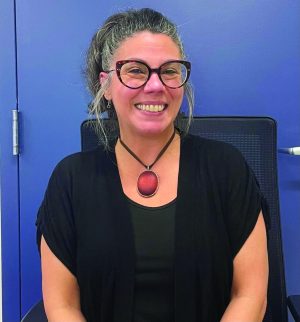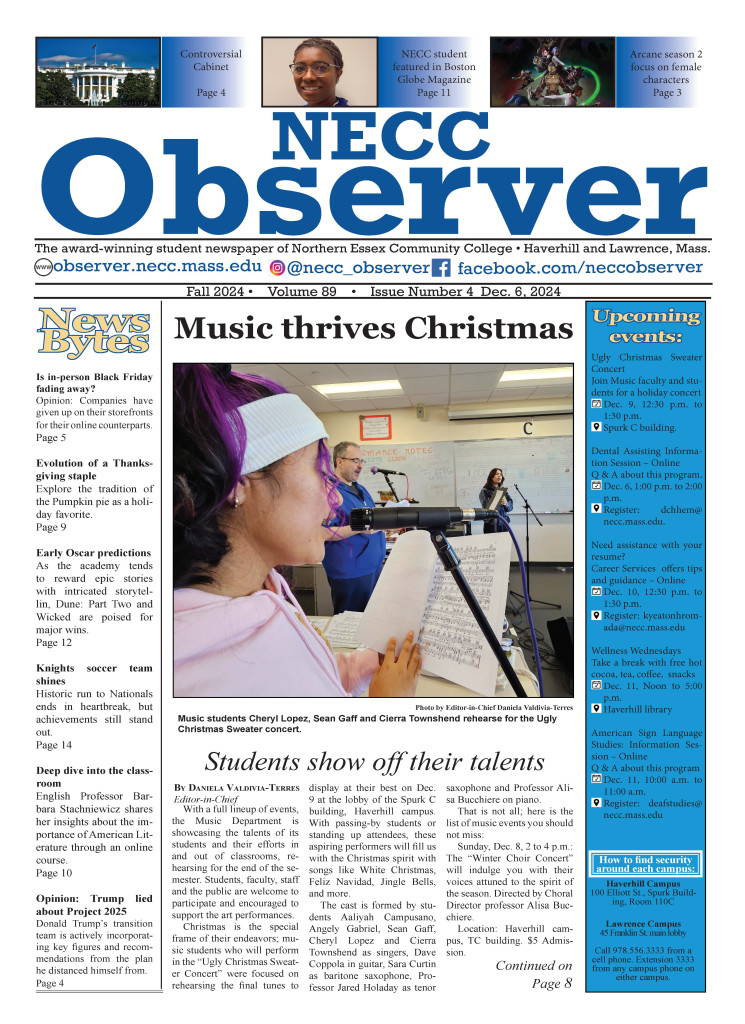
Early College students from Lawrence High School set themselves up for success by planning ahead their academic futures.
At around 9:30 a.m. on Oct. 31, 2024, 26 students from Lawrence High School filled the seats in Room L014 in the Dimitry building on the Northern Essex Community College Lawrence campus to explore the Liberal Arts and Humanities.
A substantial value of taking “Intro to Liberal Arts (are the) suggestions (it gives to) students who really don’t know what they want to major in” said the professor of the class Maurisa Charest.
“Taking this course in one semester” offers students a variety of options and “a glimpse of what they want to study (because they) learn a little bit of everything” continued Charest.
One of the biggest lessons Charest has learned through her years of academia is that students “learn by doing and learn by watching,” said Charest.
So, in celebration of Halloween, which is the day the class session met on, Charest presented a YouTube video titled “History of Horror.”
The significance of the students studying this video is to help them understand horror themes, film techniques and storytelling.
Within the studies of Liberal Arts and Humanities, studying T.V. shows, films and music videos are important because it strengthens the students’ “critical thinking” skills, which is an “important (aspect) of Liberal Arts” said Charest.
To improve their comprehension about horror themes, film techniques and storytelling the Lawrence High School students analyzed the one billion viewed music video Thriller starring historical pop sensation Michael Jackson and directed by John Landis.
Before the professor played the video she distributed a worksheet with a list of questions that were organized into 5 parts: General understanding, horror themes, music and dance, film techniques and storytelling and a reflection piece.
The purpose of the worksheet is to keep the students “involved (by) answering questions to connect with different art forms” found in the music video, which “allows them to (use their) critical thinking (skills) to answer the questions,” said Charest.
After the music video finished playing and the students completed their worksheets, the class used “the art of conversation” to review each question, said Charest.
By analyzing the music video, the students were able to identify horror creatures and tropes like zombies and werewolves. In addition, many of the students categorized the choreography as both fun and fearful.
The students collaboratively agreed that with the music videos use of different camera angles, lighting and sound effect it was suspenseful to watch.
As a result of the meaningful class discussions, this group of early college students not only benefit from “getting college credit (in high school, but) this (course) exposes them to art, music, nature (and) philosophy” said Charest.
To showcase the skills the students have obtained throughout this course, they are required to complete a final project presentation.
The project entails each student to create their own “Liberal Arts or Humanities course” and present it to the class as if they were the professor for the day, said Charest.
The goal of the final presentation is for the students to pick a topic that peaks “their interest” that will reflect their understanding of the “Liberal Arts and Humanities” and help build their confidence towards utilizing their critical thinking skills, said Charest.

